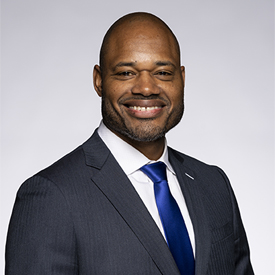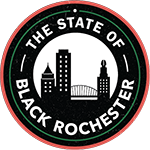 Cautious Optimism: Realistic Skepticism of the State of Black Rochester
Cautious Optimism: Realistic Skepticism of the State of Black Rochester
I am cautiously optimistic about the state of Black Rochester. Our community’s disparate access levels to financial services, homeownership, and generational wealth fuel my skepticism. NYS Attorney General reports and research complemented by local educators, reporters, and community leaders have helped paint an increasingly clear picture of the current data and some of the driving factors for disparities in our community. Fortunately, some of us organize resources and strategies to address the inequalities. We recognize that interventions must be designed to serve Black residents and households.
Even decades after housing discrimination was outlawed and income-qualifying first-time homebuyer programs were established, the Black to white homeownership gap – a key driver and indicator of the wealth gap – is wider than it was in 1968. The Black homeownership rate in greater Rochester is 33%, less than half of our region’s white homeownership rate of 73%. Homeownership, on average, represents 40-70% of household wealth in America. For Black households, it is typically near 70%, the primary source of household wealth, where positive wealth exists at all.
The factors that contribute to the homeownership gap are longstanding and complex. I learned about the New Deal, labor unions, social security, and 30-year mortgages. These policies and initiatives aided in the war on poverty and brought America out of the Great Depression. They have a commonality: Each of these policies excluded Black Americans. This was a time when eugenics, which accepted racial hierarchy as science, was a popular ideology that drove the exclusion of Black households from suburban development, union jobs, and eligibility for social security benefits. Whites reinforced these policies with violence and threats – right here in Rochester.
The exclusion still resonates today. Black mortgage applicants are denied at higher rates and apply at lower rates. The systems of prosperity that were once violently enforced as whites only still evoke hesitation among Black people as not for us. Rochester’s Black community must embrace ownership, financial services, and tools of wealth and prosperity.
The Urban-Suburban Dichotomy
A 2024 McKinsey report on the state of Black residents in America cited that whereas Black-white disparity exists in every community in America, the gap is smallest, and Black well-being is strongest, in suburban counties, near cities. We wrestle in our community with a tension between focusing on restoring – and staying in – predominantly Black neighborhoods of our city vs. seeking the academic outcomes and lower crime rates of our suburbs. Being a Black family in the suburbs can lead to feelings of isolation, especially for our children in schools that reflect the dramatic racial segregation of greater Rochester. This isolation also impacts the adults, leading to feelings of inadequacy, exclusion, and loneliness. There are pros and cons to urban and suburban living.
Despite the urban-suburban dilemma, I am optimistic about our community’s ability to address anti-Black racism. For example, Connected Communities is reimagining and rebuilding the EMMA and Beechwood communities to be mixed-income, with solid economic and education resources that center on Black residents. I am also optimistic about the leadership of Mayor Malik Evans – the second consecutive Black mayor of Rochester. Mayor Evans spoke in his first term victory speech of leading Rochester to the “upper echelons of American cities.” The collective efforts of Black and allied leadership in our community make this a real possibility for Rochester. We have even recently seen Black elected leadership in suburban towns, including Andrea Evans, the first Black Irondequoit town supervisor. All evidence of connection and community bodes well for greater Rochester Black suburbanites as well.
Raise Them Up Right: The Next Generation of Black Leadership
While acknowledging the sobering reality of persistent disparities, I see the opportunities for current Black leadership in greater Rochester. When I came to Rochester in 2013, there was almost no Black leadership in local philanthropy, but today, Rochester Area Community Foundation’s President and CEO is Simeon Banister, a home-grown talent who is an inspiration to many. Simeon and other Black leaders were raised by community activists, preachers, and civil servants – taught what it means to live with purpose and to uplift one’s community. This is a generation of Black leaders who are not a fluke or a token, but truly represent a new reality of Black leadership for greater Rochester.
With the keys to the castle in hand, our challenge is to pivot to navigate the current game and bring the Black perspective to leadership in a way that makes a difference for generations to come. As we face the limitations of a single role – even the top role – in a system built on inequities, we strive to establish a legacy that makes Martin Luther King Jr.’s vision of bending toward justice ring true.

